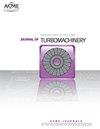喷油器尺度增材制造燃料通道内的传热
IF 3.1
3区 工程技术
Q3 ENGINEERING, MECHANICAL
引用次数: 0
摘要
由于温度对燃料降解的影响,燃料湿润通道的传热知识对于喷油器设计和寿命估算具有重要意义。未来的注入器将采用增材制造方法,以降低生产成本和时间,同时促进更灵活的设计实践。众所周知,与传统制造技术相比,增材制造(AM)会导致表面粗糙度增加,然而,关于这种粗糙度如何影响传热的数据有限,特别是在液体流动中。本文解决了窄型直喷燃油喷嘴先导廊90度沟道弯曲时液体流动传热系数的反热传导问题。将两个粗糙表面的传热分布与等效光滑表面进行比较。两个粗糙表面形貌不同,但具有相同的相对有效沙粒粗糙度,与原型AM喷油器相匹配。砂粒粗糙度的预测是根据增材制造燃料通道的高相对粗糙度尺度进行的。从原型AM燃料廊的表面测量估计的有效沙粒粗糙度为通道水力直径的约13%。对于两个粗糙的表面,在弯曲之前的直段,传热增强高达光滑表面值的三倍,在弯曲周围高达四倍。两种粗糙表面的传热分布相似,但根据表面形貌的不同,传热大小相差约17%。这突出了表面特征的传热有效性的重要性,与砂粒粗糙度不匹配的两个表面所考虑的。根据传热效率的差异调整数据,将粗糙表面的平均传热校正到7%以内。本文章由计算机程序翻译,如有差异,请以英文原文为准。
Heat Transfer in an Injector-Scaled Additively Manufactured Fuel Passage
Abstract Knowledge of heat transfer in fuel wetted passages is important for informing injector design and life estimates due to the effects of temperature on fuel degradation. Future injectors will be manufactured using additive methods in an effort to reduce production costs and time, while also facilitating more agile design practices. Additive manufacturing (AM) is known to result in increased surface roughness compared to conventional manufacturing techniques, however limited data exist on how this roughness impacts heat transfer, particularly in liquid flows. This paper solves the inverse heat conduction problem for heat transfer coefficient in liquid flows through rough 90 deg channel bends typical of the pilot gallery in a lean direct-injection fuel spray nozzle. Heat transfer distributions across two rough surfaces are compared to an equivalent smooth surface. The two rough surfaces have different morphologies but have the same relative effective sand grain roughness which is matched to a prototype AM fuel injector. The sand grain roughness is predicted from a correlation that has been adapted for the high relative roughness scales characteristic of additively manufactured fuel passages. The effective sand grain roughness estimated from surface measurements of a prototype AM fuel gallery was ∼13% of the passage hydraulic diameter. For the two rough surfaces, the heat transfer enhancement is up to three times the smooth surface value for the straight section preceding the bend and up to four times around the bend. Heat transfer distributions across the two rough surfaces are similar, but the magnitudes differ by ∼17% depending on the surface morphology. This highlights the importance of the heat transfer effectiveness of surface features, which unlike the sand grain roughness is not matched for the two surfaces considered. Adjusting the data for differences in heat transfer effectiveness corrects the average heat transfer for the rough surfaces to within 7%.
求助全文
通过发布文献求助,成功后即可免费获取论文全文。
去求助
来源期刊
CiteScore
4.70
自引率
11.80%
发文量
168
审稿时长
9 months
期刊介绍:
The Journal of Turbomachinery publishes archival-quality, peer-reviewed technical papers that advance the state-of-the-art of turbomachinery technology related to gas turbine engines. The broad scope of the subject matter includes the fluid dynamics, heat transfer, and aeromechanics technology associated with the design, analysis, modeling, testing, and performance of turbomachinery. Emphasis is placed on gas-path technologies associated with axial compressors, centrifugal compressors, and turbines.
Topics: Aerodynamic design, analysis, and test of compressor and turbine blading; Compressor stall, surge, and operability issues; Heat transfer phenomena and film cooling design, analysis, and testing in turbines; Aeromechanical instabilities; Computational fluid dynamics (CFD) applied to turbomachinery, boundary layer development, measurement techniques, and cavity and leaking flows.

 求助内容:
求助内容: 应助结果提醒方式:
应助结果提醒方式:


